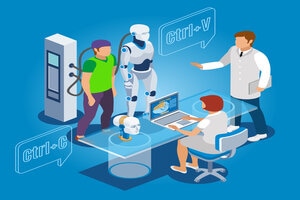
CCM software facilitates continuous and coordinated care for patients with chronic diseases
In recent years, healthcare providers have increasingly turned to Chronic Care Management (CCM) software to enhance patient care and operational efficiency. This trend is driven by the need to effectively manage the growing population of patients with chronic conditions, improve health outcomes, and reduce overall healthcare costs.
CCM software facilitates continuous and coordinated care for patients with chronic diseases. By providing tools for regular monitoring and communication, these platforms enable healthcare providers to proactively manage patient health. This proactive approach leads to improved patient outcomes, as early interventions can prevent complications and hospitalizations. Moreover, CCM programs have been shown to reduce depression and enhance social activity among patients, thereby improving their quality of life.
Managing multiple chronic conditions often involves various specialists and treatment plans. CCM software streamlines this complexity by facilitating seamless communication and coordination among healthcare providers. This ensures that all members of a patient’s care team are informed and aligned, reducing the risk of redundant or conflicting treatments. Efficient care coordination not only enhances patient safety but also optimizes resource utilization within healthcare systems.
From a financial perspective, CCM software offers significant benefits. Medicare provides reimbursements for chronic care management services, creating a new revenue stream for healthcare providers. Implementing CCM programs can lead to substantial cost savings by reducing hospitalizations and emergency room visits. For instance, studies have shown that effective chronic care management can decrease overall healthcare costs for patients by preventing costly hospital admissions.
The integration of technology in CCM allows for more effective and efficient patient care. Features such as secure messaging, telehealth capabilities, and electronic health record (EHR) integration enable continuous monitoring and timely interventions. These technological advancements empower patients to take an active role in managing their health, leading to better adherence to treatment plans and improved health outcomes.
The healthcare industry is increasingly shifting towards value-based care models, which emphasize quality and patient outcomes over service volume. CCM software aligns with this paradigm by focusing on preventive care and chronic disease management. By improving patient outcomes and reducing unnecessary healthcare utilization, CCM programs support the goals of value-based care and position healthcare providers for success in this evolving landscape.
Investing in Chronic Care Management software enables healthcare providers to enhance patient care, improve operational efficiency, and capitalize on financial incentives. As the prevalence of chronic diseases continues to rise, the adoption of CCM software represents a strategic move towards sustainable, high-quality healthcare delivery.
© 2024 Crivva - Business Promotion. All rights reserved.